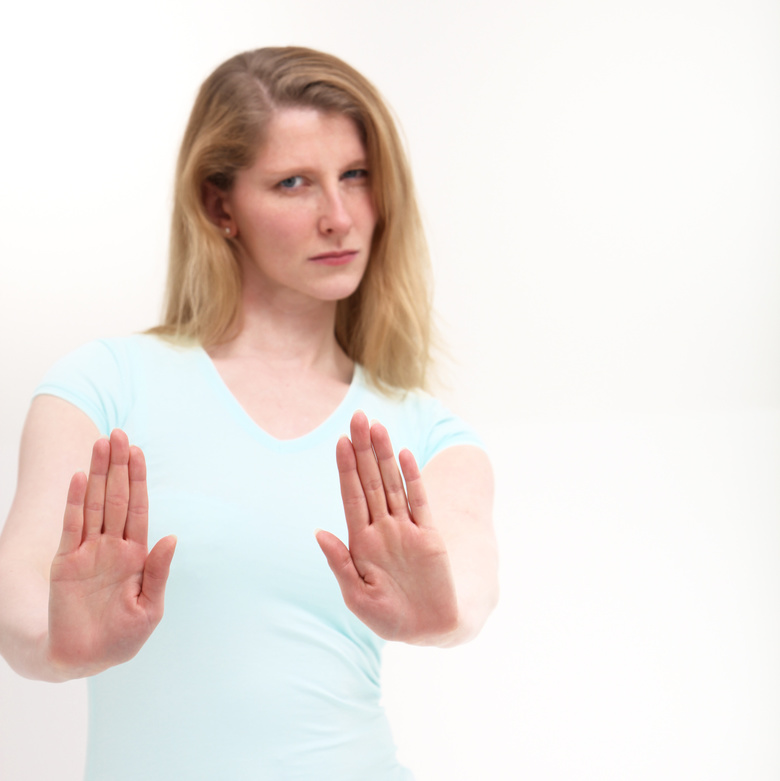 In a world where everybody wants something from us, knowing how to say no is a valuable skill that can help us navigate through society’s increasing demands while keeping our mind in tip-top shape.
In a world where everybody wants something from us, knowing how to say no is a valuable skill that can help us navigate through society’s increasing demands while keeping our mind in tip-top shape.
Without the ability to draw boundaries and say “NO” to others (and “YES” to yourself), we inevitably get tangled in unpleasant situations. To put it differently, we end up doing pro bono work, and we abandon our dreams in favor of others’.
It’s just two letters! Why is it so damn hard to say NO?
Remember that time your boss begged you to take on a tough project because no one else wanted to? You said yes and then you had to spend your weekend doing something that shouldn’t have been your responsibility in the first place. Your mind was screaming “NO,” but your mouth let out a “YES.” How did this happen?
The reasons why some of us find it difficult to say no are diverse, and we can spend days discussing this topic. Maybe we need other people’s approval so badly that we end up jumping through hoops to get it. Or perhaps it has something to do with the stigma surrounding this word.
Whatever the reasons, knowing how to say no in an unthreatening manner, is a skill that can be easily mastered with practice.
Be assertive.
An assertive attitude is hands down the best course of action for when you want to deliver a firm but polite “NO”. In essence, assertiveness is the ability to express who we are and what we want in a given situation, without offending the person in front of us.
Assertiveness relies on two simple rules:
- Avoid condescending tones, bad words and passive-aggressive remarks.
- Let people know that your needs are just as important as theirs.
Here’s an example:
John: Can you help me out with this project?
Tracy: Unfortunately, I can’t. I have to…
They can’t put you down for having an opinion/preference, and they can’t accuse you of being too mean or hurtful. It’s perfect! Well, almost perfect because at some point, we simply can’t take responsibility for other people’s feelings and deny our freedom for the sake of their happiness.
Always give a reason for your answer.
It might sound a bit strange, but giving reasons for your actions, decisions, or refusals can make people more “malleable” and sympathetic. To better understand how this strategy works, let’s go back to the famous “copy machine study .” Here’s how it took place.
A researcher would walk to someone who’s waiting in line at the copy machine, trying to convince that person to give up his/her spot. There were three experimental conditions:
- Request only: “Excuse me, I have 5 pages. May I use the xerox machine?”
- Placebic information: “Excuse me, I have 5 pages. May I use the xerox machine, because I have to make copies?”
- Real information: “Excuse me, I have 5 pages. May I use the xerox machine, because I’m in a rush?”
The results were fascinating to say at least. In the “request only” condition, 60 percent of people gave up their spot in line, while in the “placebic and real information” conditions, 90% of all participants chose to the researcher let in front.
An obvious conclusion we can draw from this study is that people are more understanding and less judgmental when you provide a reason (even if it’s a dumb reason) for your answer.
To put it in a compact form – always add a reason to your “NO’s.”
Think of what you’ll lose by saying YES
On many occasions, people end up saying “YES” (when they should have said “NO”) because they don’t take the time to assess the situation and get in touch with their true needs.
In such cases, visualizing our gains and losses can help us make better decisions. Whenever someone asks for a favor, simply take a moment to assess the situation and become aware of the pros and cons of your decision.
Once you realize how much you will lose by saying YES (or how much you will win by saying NO), those NO’s will fly out of your mouth so fast your mind won’t even have time to overthink your decision.
To sum up, the main purpose of weighing the pros and cons is to give you a glimpse into the future. Sometimes, an uncomfortable “YES” proves to be highly advantageous in the long run.
Peace of mind belongs to those who know how to say no and still keep their integrity intact.




Comments